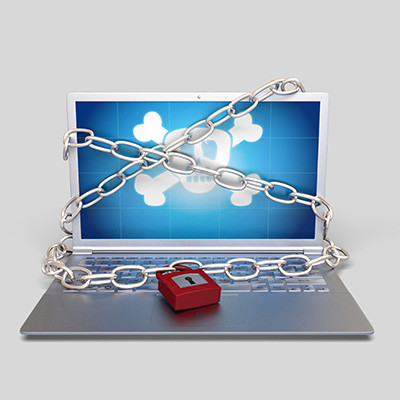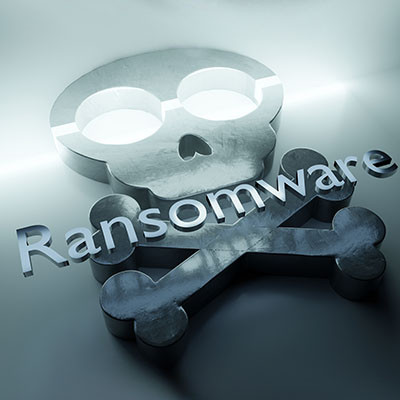Cyberthreats are increasingly sophisticated, and businesses have to do what they can to address these issues. Since cyberattacks can have a massively negative impact on your business, it stands to reason that you need a platform in place to enhance your employees’ awareness of Internet-based threats. This month we look at the top three IT security concerns businesses face and what should be done to confront them.
Network Synergy Blog
Like many of the past few years, this year has witnessed a significant surge in high-profile ransomware attacks. If you haven't already strategized how to safeguard your business from these threats, now is the time to act. Fortunately, you can take several proactive measures to mitigate the impact of ransomware attacks, and it all starts with preparation.
I hate to be the bearer of bad news, but when it comes to cybersecurity threats it’s kind of hard not to be. I used to look at it from two sides; one side is fascinated at the innovation and intensely brutal ways that high-end cyberattacks work, and the other side of me loses sleep at night worrying about these risks affecting our clients, prospects, and even my own business. This one particular classification of cyberattack, however, takes the cake for being especially frightening.
Cybercriminals fight dirty, whether it’s attacking small businesses, large enterprises, or individuals who just want to watch Netflix. It doesn’t matter who you are or what you do for the community; you’ll always be a target for hacking attacks. To save time and effort, hackers will use low-tech attacks and social engineering attacks to target individuals. Hackers aren’t developing new threats all the time; if anything, they largely use existing exploits, purchasable software, and social engineering to take advantage of people.
Ransomware has rapidly climbed to be one of the most dangerous and feared malware attacks that is used nowadays. It’s gotten to the point that, if you wish they would just stop, we can hardly blame you.
Unfortunately, there is no reason to believe that ransomware is going anywhere.
Ransomware is one of the more dangerous threats out there for businesses of all industries and sizes. To help emphasize just how dangerous it is, however, you have to look past the initial threat of having to pay a ransom and look at the other risks associated with it. We’re here to try to get the point across that ransomware is something your business should absolutely be taking seriously.
Ransomware is such a common occurrence these days that it has entered the public discourse, but we also want to note that it’s such an important topic to discuss with your team that you can never talk about it enough. We want to address some of the most common questions we get asked about ransomware and what can be done about it.
There is a lot made about ransomware, for good reason. It is quite simply one of the nastiest cyberattacks out there and it demands your attention. A lot of people understand what exactly ransomware sets out to do, but they don’t understand how it got that far and how to address the situation if they have the misfortune of being put in that position.
We talk a lot (and we mean a lot) about cybersecurity, with ransomware getting a lot of our focus…and for very good reason. Ransomware is a huge threat that today’s businesses need to be prepared to deal with. In light of this, we wanted to share a few tips to help you avoid the negative ramifications of ransomware.
This past January, the Federal Bureau of Investigation issued an announcement that they had targeted and taken down the servers for a Dark Web organization responsible for the Hive ransomware group. While there is certainly cause for celebration here, one major statistic is enough reason to continue being concerned.
Ransomware is one of the more dangerous threats out there today, and since it is so prominent and dangerous, it is a popular choice amongst hackers. To combat this threat, a community has formed around the cause, encouraging users to not pay the ransom by providing free malware removal tools for the most popular ransomware threats.
We often discuss how your business can avoid the impact of ransomware, but what we don’t often discuss is what happens to businesses that do, in fact, suffer from such a devastating attack. We want to use today’s blog as an opportunity to share what your business should (and should not) do in the event of a ransomware attack, as well as measures you can take to avoid suffering from yet another in the future.
We know, we know; you’re probably sick of seeing ransomware in headlines, and so are we, but we cannot stress enough how important having an awareness of it is for any business owner. A new study has found that businesses infected by ransomware who choose to pay up experience a different type of fallout--one that is a major cause for concern and a stark reminder that there are no guarantees with ransomware. Ever.
What if I told you that 92 percent of all organizations that are hit by a ransomware attack and agree to settle with the scammers, don’t ever see their data again? You’d probably say that you would never, ever pay and those that do, don’t make sense. Most people keep that stance until their choices are to pay for the data in the hopes of getting it back, or lose it completely. Let’s unpack ransomware and the strategy that hackers most utilize to deploy it: Phishing.
For the past several years, ransomware has been a major thorn in the sides of businesses. Hackers that were once known for “hacking” into networks, changed tactics when encryption just got too strong. Today, these “hackers” use confidence tactics to gain access to accounts. Once they’re in, their strongest tool is ransomware. Let’s look at what makes ransomware so dangerous and how your company can combat the constant attacks that come your way.
65 of any currency doesn’t seem like a lot of money, but when you are dealing in the cryptocurrency Bitcoin, it adds up quick. One city on Florida’s Atlantic coast is finding that out the hard way after getting hit with a ransomware that stymied the city of 35,000 government’s ability to function. Let’s take a look at the situation that made the city’s leaders agree to pay hundreds of thousands of dollars to scammers.
Let me ask you a question… let’s say that you’re about one year from your projected retirement, when a ransomware attack encrypts all of your files. What do you do? Pack it in and retire early? This is precisely the situation that the practitioners of Brookside ENT & Hearing Services of Battle Creek, Michigan, have found themselves in - and it may not be over yet.
The funny thing about ransomware is that they give them very strange names: Bad Rabbit sounds like the name of a villainous bunny who gets his comeuppance in some type of modern nursery rhyme, not malware that would ravage hundreds of European businesses. Locky seems like the son of Candado de seguridad, a character Medeco would come up with to educate kids on proper physical security. The latest in a long line of funny-named ransomware, SamSam, isn’t a pet name for your pet ferret you perplexingly named Sam, it is one of the worst ransomware strains ever, and it has caught the attention of U.S. Federal law enforcement.
Ransomware doesn’t discriminate with its targets, as the city of Atlanta, Georgia now knows so painfully well. The city became the target of a ransomware attack that crippled many of its critical system workflows. The municipal government suffered from one of the most advanced and sustained attacks in recent memory.

















